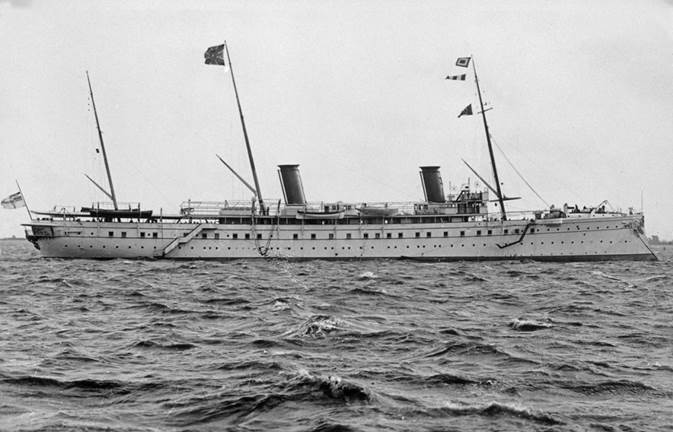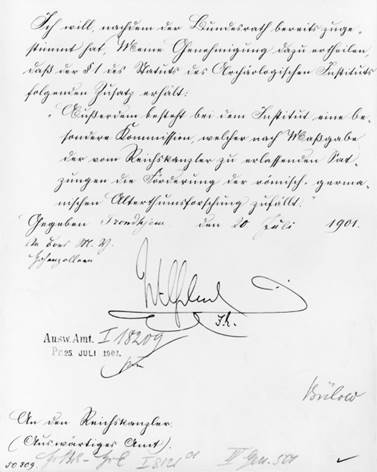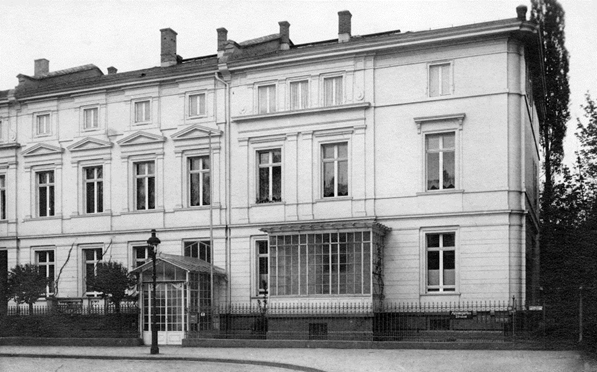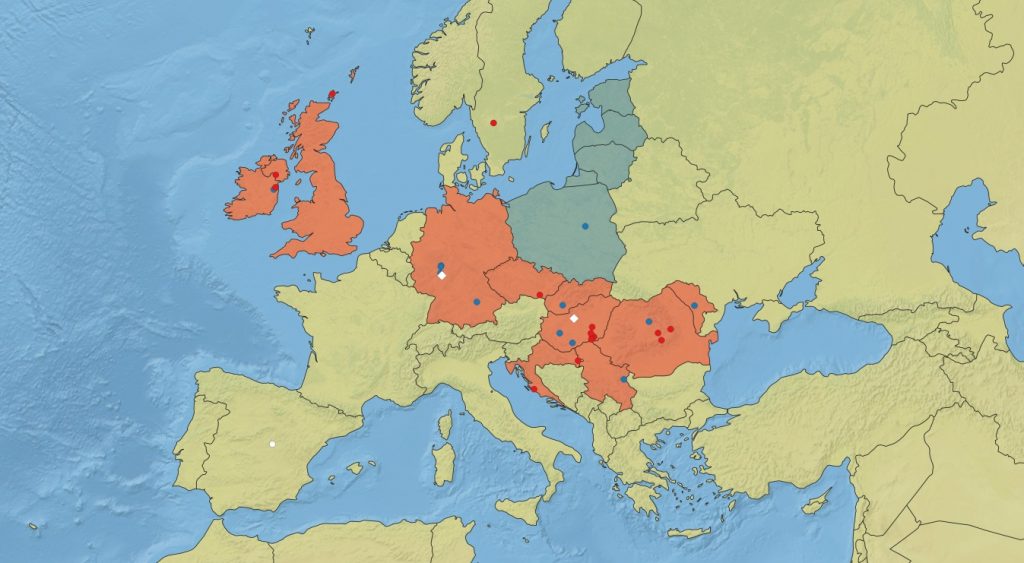On board the Royal Yacht “Hohenzollern”, on 20th July 1901, the emperor Wilhelm II decreed that a Romano-Germanic Commission be founded. It took up its work in Frankfurt/Main on 1st October 1902, following Rome, Berlin and Athens to be the fourth branch institute of the German Archaeological Institute.

The “Immediatverfügung” signed by Wilhelm II was the end result of a lengthy process. As early as 1890, Theodor Mommsen had asked “ought it not to be possible, just as we maintain Imperial Institutes at Rome and Athens, to bring to life a similar institution in Germany for the study of Roman and Germanic remains?” (Translation C. Rummel). This initial question gradually developed into a movement to institutionally develop the Reichs-Limeskommission further, and to establish a body tasked with supra-state research in Germany. As such, the RGK can be seen as a successor institution of the Reichs-Limeskommission, whose archives are held in the Frankfurt institute.

The small institution rapidly developed into one of the largest departments of the DAI. Today, it employs more than 40 persons. A small number of permanent scientists are supported by colleagues working within the framework of research projects and staff members that ensure a functioning infrastructure. The RGK is led by two directors with expertise in different, complementing fields of archaeology. The Commission, an advisory and steering board made up from leading experts from universities, heritage bodies and museums, supports the institute in its work.
The main base of the RGK in Frankfurt/Main is a purpose-built building in Palmengartenstraße. Since 2016, the RGK maintains a research unit in Budapest, which serves to coordinate and develop research projects in central and south-eastern Europe.
For more than 115 years, the RGK has been a centre of research on the Archaeology from earliest prehistory to the early medieval period in Europe, its main areas of research stretch from the North Atlantic to the Black Sea.

The entrance hall in 1927 (Photo: RGK) 
The office of the first director in 1927 (Photo: RGK) 
The Romano-Germanic Commission’s seat from 1927 to 1944 at Palmengartenstraße 10-12. It was gutted by fire after an air raid in 1944 (Foto: RGK)
The map of current RGK projects illustrates the NW-SE axis of its main research area. Last year, the institute was involved in 45 research projects with partners in more than 20 countries. In the course of these, fieldwork was carried out at and around 17 sites (red dots) ranging from Ireland via Hungary to Moldova.
